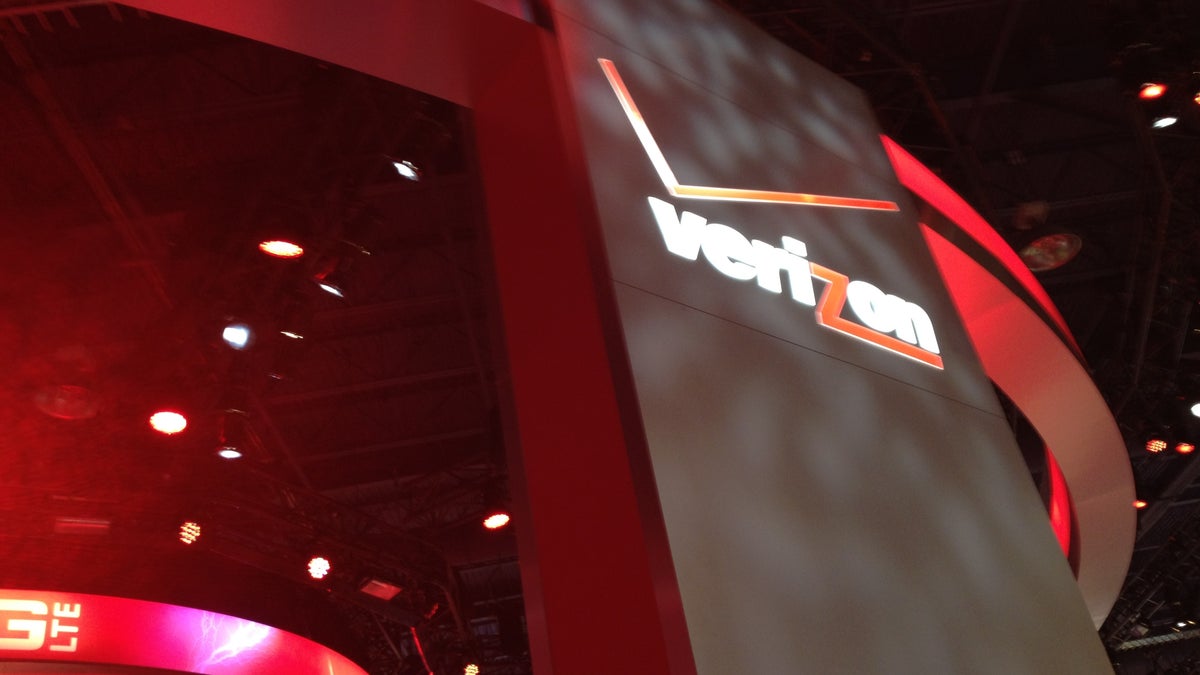iPhone propels Verizon subscriber growth as profit rises
Verizon added 501,000 net contract subscribers, likely driven by the continued popularity of the iPhone 4S. It sold 3.2 million iPhones, and 2.1 million 4G LTE smartphones.

The iPhone continues to be a boon for subscriber growth for Verizon.
The New York-based telecommunications giant posted a first-quarter profit of $1.69 billion, or 59 cents a share, compared with a year-ago profit of $1.44 billion, or 51 cents a share.
Revenue rose 4.6 percent to $28.46 billion.
Analysts, on average, had forecast earnings of 58 cents a share on revenue of $28.17 billion, according to Thomson Reuters.
While the industry has suffered an overall slowdown in customer growth -- particularly on the contract side -- Verizon has remained resilient. The carrier has the advantage of a strong reputation for network quality, and has been able to draw and retain customers through its faster 4G LTE network.
"We remain confident in our ability to take advantage of the market opportunities we see," Chief Financial Officer Fran Shammo said during a conference call today.
Verizon's wireless arm, which it jointly owns with Vodafone, continues to drive the total company's growth. Revenue from the wireless operations rose 7.7 percent to $15.4 billion, thanks in part to the iPhone. The Apple
The iPhone requires a hefty subsidy Verizon has agreed to pay to keep prices as low as $199.99 for subscribers willing to sign a two-year contract. The subsidy, which is a common practice, is the highest in the industry, and weighs on all carriers that offer the iPhone.
Carriers have argued that the iPhone raises customer loyalty, improves revenue, and encourages device upgrades. In the past quarter, analysts estimated that the iPhone sold as well as the rest of Verizon's Android lineup combined, including the
The 1 million fewer iPhones sold in the first quarter vs. the fourth quarter, however, has meant an easing of margin pressure for the period, since few subsidies were paid out to Apple.
The high cost of the iPhone 4S and a pension charge dragged Verizon into the red during the fourth quarter.
In total, Verizon Wireless added 734,000 subscribers in the quarter. The company added 501,000 post-paid subscribers, or customers willing to sign a two-year contract. Verizon, like the rest of the industry, is suffering slowing post-paid growth. But the company has been able to weather the slowdown better than its rivals.
Also helping drive growth is Verizon's LTE service. Verizon sold 2.9 million 4G LTE devices, and 4G customers make up 9.1 percent of the total customer base. The company sold 6.3 million smartphones in total, with smartphones representing 47 percent of the total base, and nearly three-quarter of mobile device sales for the period.
The monthly average revenue per user rose 3.4 percent to $53.66, likely the result of higher contributions from iPhone customers. It also saw a decline in the turnover rate, as customers stuck with the carrier. It's unclear how some customers will be affected after Verizon said it plans to begin charging a fee to upgrade phones -- a fee that's new to Verizon but already in place with other carriers.
On the wireline side, which has slowly losing business from traditional telephone customers, revenue fell 2.2 percent to $9.9 billion. The company has been attempting to offset those losses with a higher focus on its premium Fios service and more advanced business services such as cloud and security products.
Verizon added 180,000 Fios TV customers and 193,000 Fios Internet customers. Shammo said the company plans to improve its revenue by expanding services such as remote home control.
Verizon's landline decline was largely a result of Verizon getting out of unprofitable areas, including international wholesale, as well as exiting the pay phone and calling card businesses.
The company is also working to cut out $2 billion in costs this year from the wireless side.
The company is also trying to push through a deal to buy spectrum from a consortium of cable companies, which also includes a cross-selling agreement. In order to entice regulators, the Verizon said it was willing to divest some of its own spectrum.
Updated at 5:07 a.m. and 5:56 a.m. PT: to include additional financial details on smartphones, iPhones, 4G, and executive comments.

